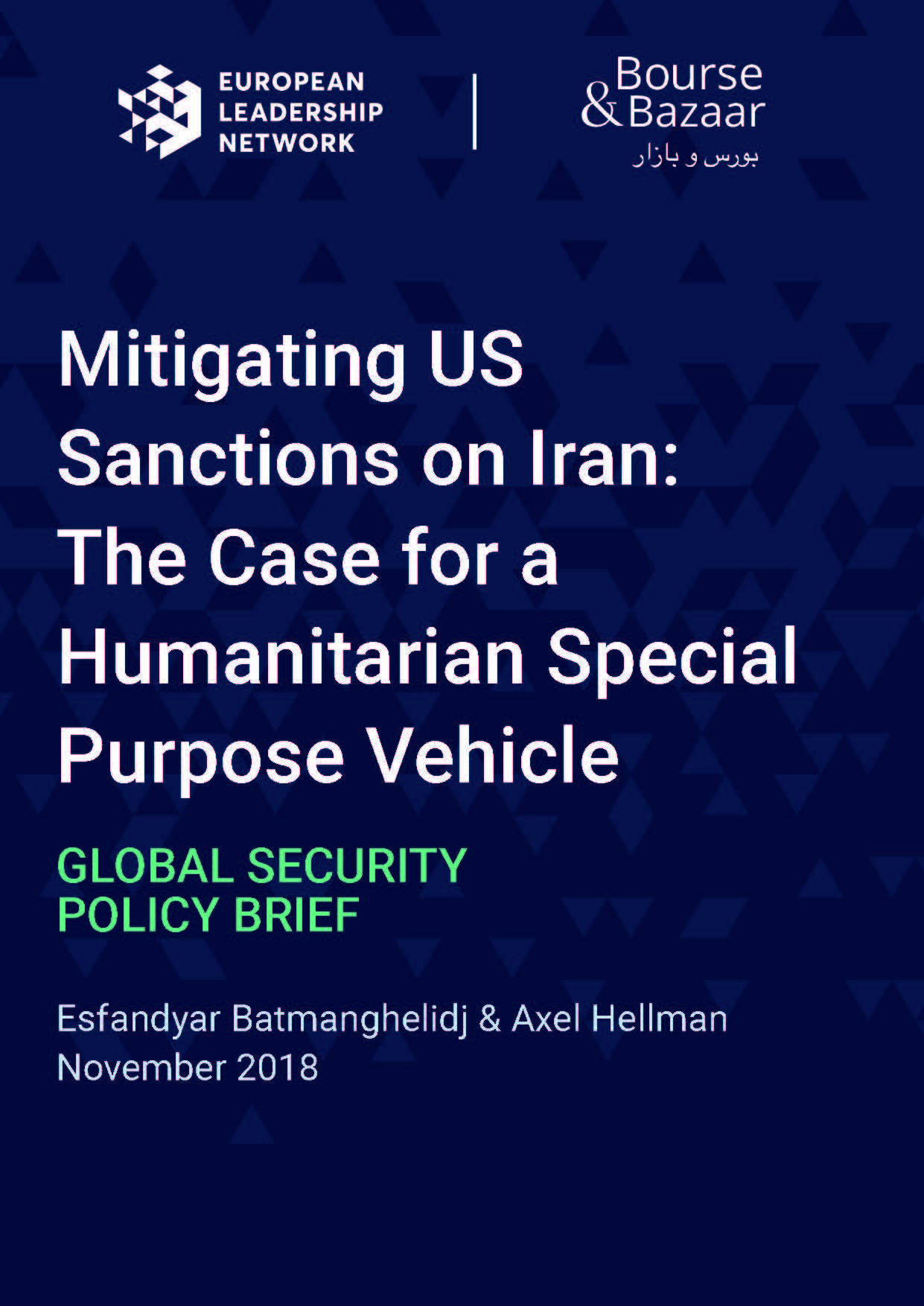A Humanitarian Special Purpose Vehicle
Download
November 2018 - 16 Pages
Please enter your email address in order to download the full report.
Executive Summary
By Esfandyar Batmanghelidj and Axel Hellman
The US withdrawal from the Joint Comprehensive Plan of Action (JCPOA) and ensuing “maximum pressure” campaign against Iran has led to a diplomatic clash with the European Union and a quorum of its member states who are striving to protect the nuclear deal. At this point, competing US and European interests and policy initiatives have not only created friction over the JCPOA and Iran policy writ large, but also driven a wedge in transatlantic cooperation in a crucial theater for both European and US security policy.
There is, however, one issue on which US and European officials seem to be in agreement: that the Iranian people should be spared from the hardships of economic sanctions. Senior officials in the Trump administration have consistently emphasized that US sanctions are targeted against Iran’s leadership and not its ordinary citizens. If genuine, such statements point to one potential area of cooperation between Europe and the United States: ensuring that humanitarian trade can persist even under stringent US sanctions on Iran.
This new report by Esfandyar Batmanghelidj and Axel Hellman argues that the establishment of an humanitarian special purpose vehicle, or H-SPV, could help Europe achieve several goals:
First, it would allow Europe to demonstrate its ability to sustain vital trade with Iran in the face of US sanctions. The H-SPV can be brought online faster, more reliably, and with a clearer direct impact on the wellbeing of the Iranian people than a general SPV.
Second and related, the H-SPV would advance European economic sovereignty.
Third, the H-SPV would serve as a test to the US commitment to protect humanitarian trade. If the US accepts to join the H-SPV, Europe will have effectively neutralized the issue of compliance fears that might linger around any Iran-specific mechanism. If the US refuses, Europe will be further justified in pressuring US authorities for licenses and other measures that will provide comfort to its banks regarding the SPV.
Fourth, the H-SPV could prove innovative for sanctions policy. The experience of establishing multilateral mechanisms to sustain humanitarian trade will be invaluable in a world where the imposition of unilateral sanctions looks increasingly likely.
To achieve these goals, the H-SPV should be established in accordance with these criteria:
It should focus exclusively on humanitarian trade.
The focus on humanitarian trade would enable a functional linkage of the H-SPV to European banks, including European central banks. In this role it could serve as a kind of trading house, able to serve as an intermediary on behalf of European and Iranian companies.
While an SPV focused on trade considered sanctionable by the US is unlikely to develop far beyond the netting service currently envisioned, the H-SPV could develop into a “gateway bank” which serves as an intermediary between the Iranian and European financial systems.
While the H-SPV would be foremost intended to serve European companies, the mechanism could be opened to other trading partners, such as China and India. Europe should also invite the United States to participate in recognition of a shared commitment to ensure that the Iranian people are not unduly harmed by sanctions.
The findings of this paper are informed by discussions held at Bourse & Bazaar's 5th Europe-Iran Forum, held on November 14 in Paris, France.





